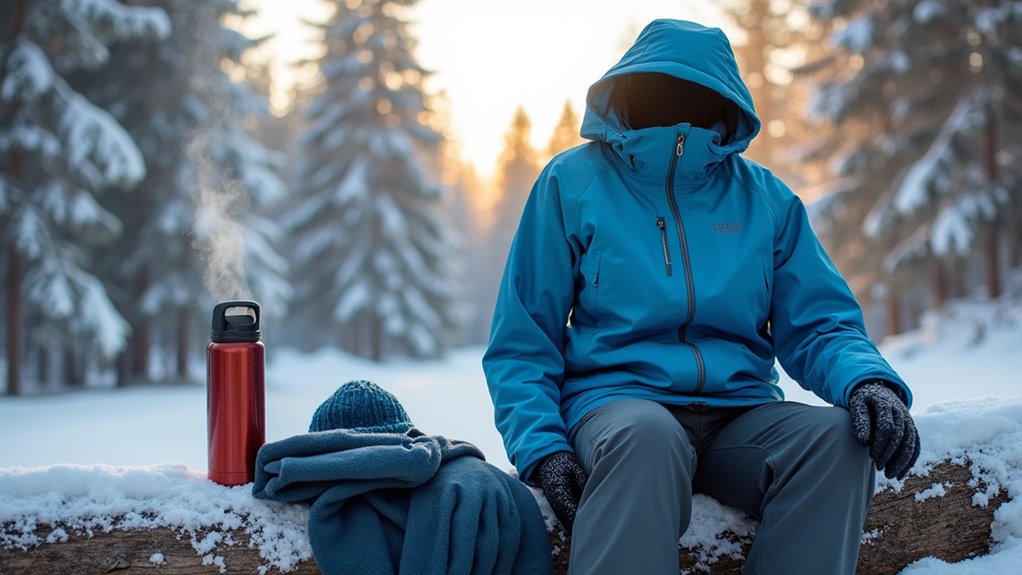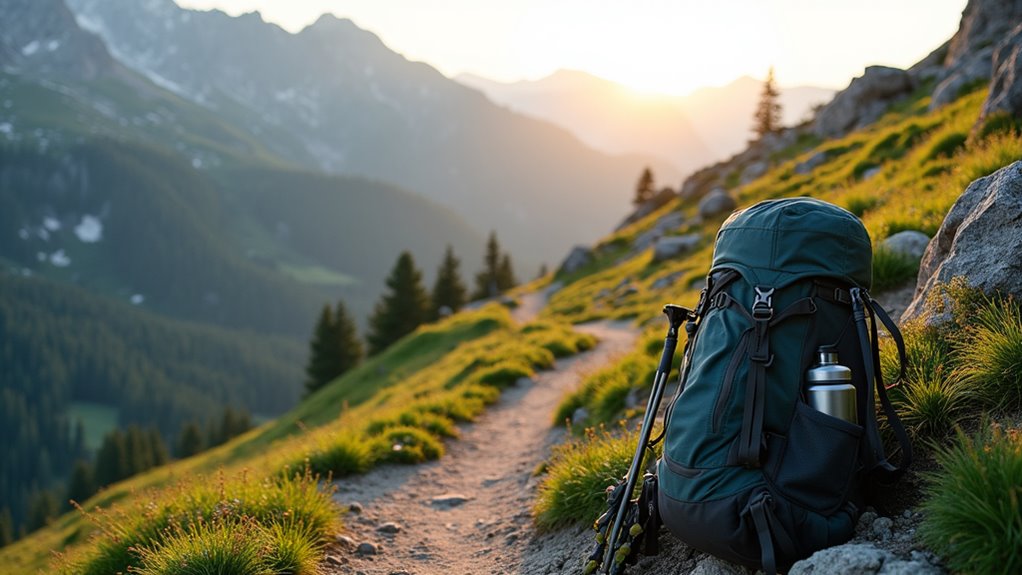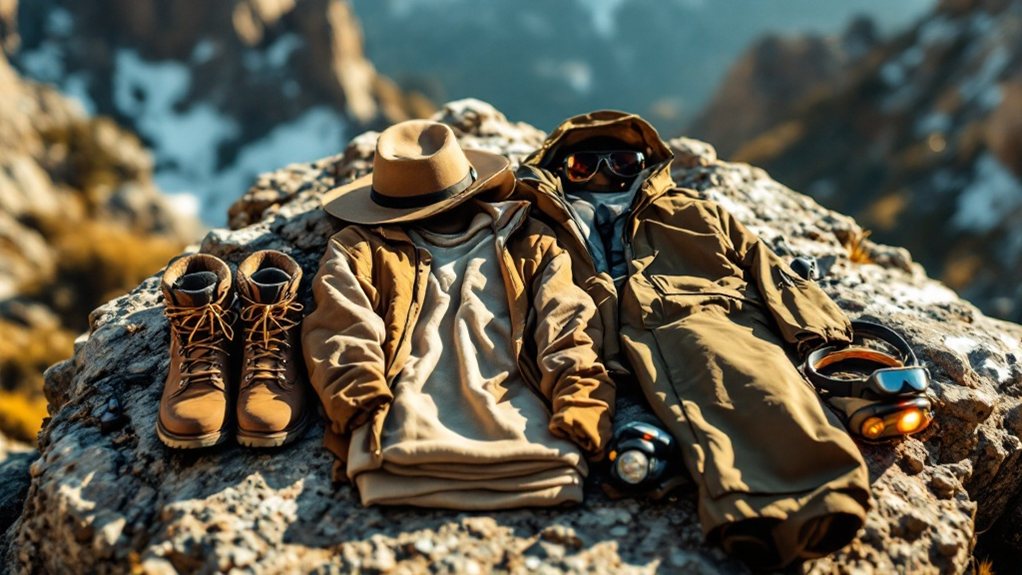To layer for winter hiking and stay warm, start with a moisture-wicking baselayer made of merino wool or synthetic fibers, followed by an insulating midlayer like fleece or down to trap body heat. Finish with a waterproof, breathable outer shell to block wind and precipitation. Add essential accessories such as hats, gloves, neck gaiters, and gaiters for your boots. Adjust layers depending on weather and exertion. There are additional tips and gear details you might find helpful next.
When you’re preparing for a winter hike, understanding how to properly layer your clothing is crucial for safety and comfort in cold, unpredictable conditions. The layering system starts with a baselayer, which sits directly against your skin. You’ll want to choose materials like merino wool, synthetic fibers, or silk for this purpose, since these fabrics wick moisture away, keep you dry, and help regulate your temperature.
Avoid cotton, because it retains moisture and can quickly lead to discomfort or even hypothermia in low temperatures. Baselayers should fit snugly without being restrictive, which helps maximize their sweat-wicking properties while maintaining circulation. Consider long underwear, glove liners, and hat liners as part of your base system for full coverage. Backcountry.com not available to EU customers may impact your ability to purchase certain baselayers if you are located in the EU.
Next, focus on your middle layer for insulation. This is the layer that traps body heat and keeps you warm as you move through colder segments of your hike. Fleece and down are popular choices, each offering varying degrees of warmth and breathability. Adjusting your layers based on trail difficulty and weather conditions helps you avoid overheating or getting too cold.
Your midlayer is your main source of warmth—think fleece or down to trap heat while staying breathable during cold-weather hikes.
Select insulating layers that are easy to add or remove, as you’ll need to adjust them based on activity level and weather changes. An effective layering system allows you to maintain optimal body temperature throughout changing conditions during your adventure. Lightweight options are suitable for moderate conditions, while heavier-duty insulation is necessary for subzero temperatures or higher altitudes.
The outer layer acts as your shield against wind, rain, and snow. Prioritize jackets and pants made from waterproof and breathable materials, such as Gore-Tex, to guarantee you remain dry without overheating. Features like adjustable cuffs, hems, and hoods can provide additional protection and allow you to seal out harsh elements.
When selecting an outer shell, balance durability with weight, especially if you’re covering long distances.
To maintain warmth and prevent heat loss, pack essential accessories. Hats, gloves, and neck gaiters are critical for protecting extremities, and gaiters help keep snow out of your boots. Always bring extra socks and consider sunglasses to guard against snow glare.
Before heading out, check the weather, plan for changing conditions, and adjust your layers accordingly. Proper layer management and gear maintenance will enhance your safety and performance throughout the hike.









